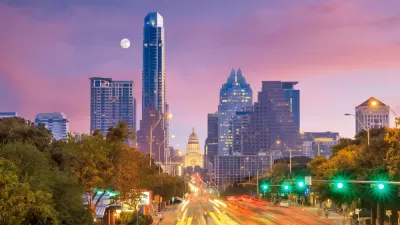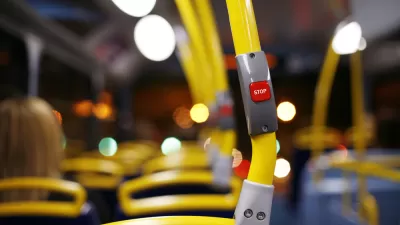An organization successfully balanced the tension between expanding rail line service and improving bus service, and ensuring race was at the forefront of the conversation.

In 2016, an Indianapolis-based faith organization launched a successful campaign to bring more funding to the mass transit system in Marion County. Shelterforce’s Miriam Axel-Lute talks with Nicole Barnes of Faith in Indiana about why the organization focused on transit improvements, how they balanced the tension between expanding rail line service and improving bus service, and how race had to be at the forefront.
Miriam Axel-Lute: Why did IndyCAN (now Faith in Indiana) pick transit improvements as a goal?
Nicole Barnes: Transit was something that we believe was imperative for the work that we do. It aligns with our mission, which is to empower and give diverse communities the opportunity to work together. We want to serve as a catalyst for the marginalized and for faith communities so they can act together for racial and economic equity. Transit absolutely fit in racial and economic equity. When we started digging into the research, we saw how lack of transportation contributed greatly to poverty.
We had this opportunity to get transit on the ballot in 2016. Our leaders and our people [agreed that] this is something that will not just improve the city economically, but will also improve our communities from a racial standpoint [and] from an economic development standpoint. That campaign beautifully embodied our mission, which is to get people from all sides to work together toward something good.
We called this campaign “Ticket to Opportunity.” Even in our choice of what we called it, it [was clear it] wasn’t just about transit, but transit as an opportunity for people to get out of the circumstances that they were in. ...
FULL STORY: The Ticket to Opportunity

Planetizen Federal Action Tracker
A weekly monitor of how Trump’s orders and actions are impacting planners and planning in America.

Congressman Proposes Bill to Rename DC Metro “Trump Train”
The Make Autorail Great Again Act would withhold federal funding to the system until the Washington Metropolitan Area Transit Authority (WMATA), rebrands as the Washington Metropolitan Authority for Greater Access (WMAGA).

The Simple Legislative Tool Transforming Vacant Downtowns
In California, Michigan and Georgia, an easy win is bringing dollars — and delight — back to city centers.

The States Losing Rural Delivery Rooms at an Alarming Pace
In some states, as few as 9% of rural hospitals still deliver babies. As a result, rising pre-term births, no adequate pre-term care and harrowing close calls are a growing reality.

The Small South Asian Republic Going all in on EVs
Thanks to one simple policy change less than five years ago, 65% of new cars in this Himalayan country are now electric.

DC Backpedals on Bike Lane Protection, Swaps Barriers for Paint
Citing aesthetic concerns, the city is removing the concrete barriers and flexposts that once separated Arizona Avenue cyclists from motor vehicles.
Urban Design for Planners 1: Software Tools
This six-course series explores essential urban design concepts using open source software and equips planners with the tools they need to participate fully in the urban design process.
Planning for Universal Design
Learn the tools for implementing Universal Design in planning regulations.
Smith Gee Studio
City of Charlotte
City of Camden Redevelopment Agency
City of Astoria
Transportation Research & Education Center (TREC) at Portland State University
US High Speed Rail Association
City of Camden Redevelopment Agency
Municipality of Princeton (NJ)




























